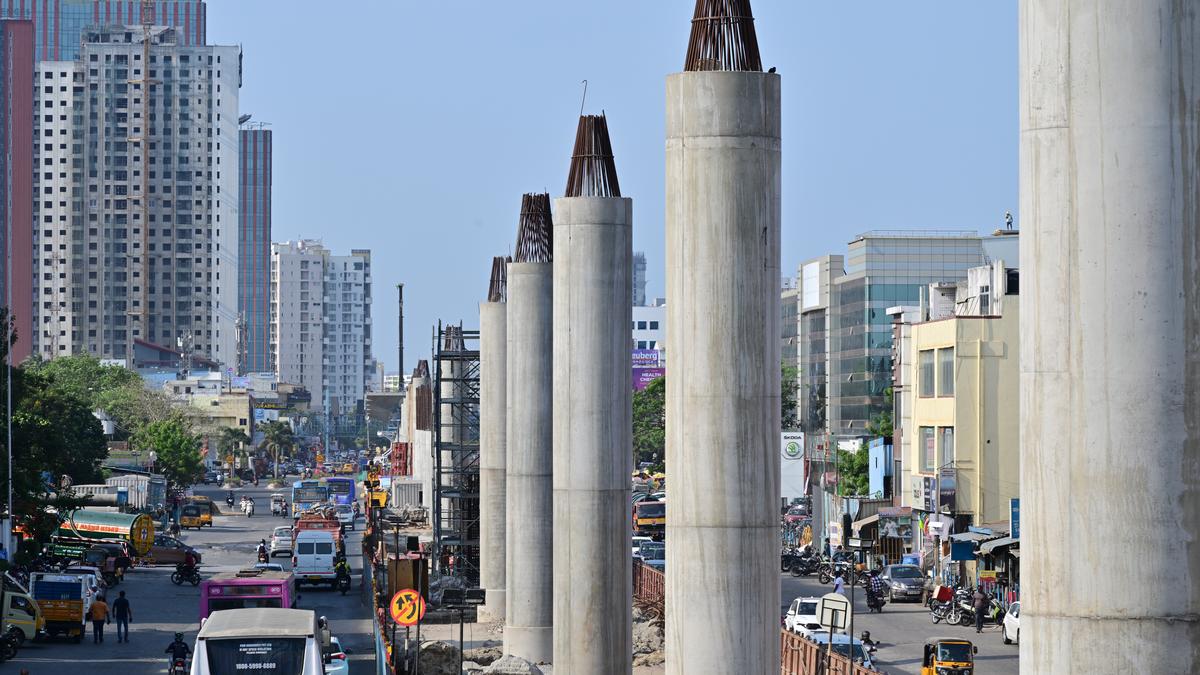
On Tamil Nadu’s financial distress | Explained
The Hindu
Explaining Tamil Nadu’s financial distress
The story so far: Tamil Nadu’s Finance Minister Thangam Thennarasu, at a meeting chaired by Union Finance Minister Nirmala Sitharaman in New Delhi on June 22 as part of preparations for the Union Budget 2024-25, made a slew of demands including the Union Cabinet Committee’s nod for the ₹63,246 crore Chennai Metro Rail Phase-2, the allocation of ₹3,000 crore towards “necessary” restoration works in areas hit by two natural disasters last year and the increase of unit cost of centrally sponsored schemes.
The Chennai Metro Rail Limited (CMRL), which is operating services on two corridors (Chennai Airport to Wimco Nagar, Thiruvottiyur, and Chennai Central to St. Thomas Mount) under Phase-1 of the metro rail project for about 54 km, has proposed to extend the project, through three corridors, for nearly 119 km. The corridors are Madhavaram to Siruseri SIPCOT (45.8 km), a north-south corridor; Lighthouse to Poonamallee Bypass (26.1 km), an east-west corridor, and Madhavaram to Sholinganallur (47 km), an orbital corridor. Eighty elevated stations and 48 underground stations have been proposed. For funding the second phase, the State government has tied up with the Japan International Cooperation Agency (JICA), Asian Development Bank (ADB), Asian Infrastructure Investment Bank (AIIB) and New Development Bank (NDB).
The Tamil Nadu government, which gave in-principle approval for the phase in April 2017, accorded administrative sanction two years later for the execution of JICA-funded stretches of the phase, treating the project as a “State sector project” without prejudice to the participation of the Union government. It did the same for other stretches in July 2020. Up to March 31, 2024, the State government sanctioned ₹5,400 crore as share capital of the CMRL and ₹12,013.89 crore as subordinate debt.
The Chennai Metro Rail Project’s Phase 2 got the approval of the Public Investment Board (PIB) as a Central sector project under the equity sharing model in August 2021. It has been awaiting the approval of the Union Cabinet Committee on Economic Affairs (CCEA) since then. In fact, when the All India Anna Dravida Munnetra Kazhagam (AIADMK) was in power in the State, Union Home Minister Amit Shah laid the foundation stone for the phase in November 2020.
In anticipation of the green signal, the State government is bearing the entire expenditure out of its own funds, which are already under enormous stress. Its plea to the Centre is to sanction Phase-2 under the 50:50 equity sharing basis, as done for Phase-1. Presenting the current year’s State budget in February 2024, Mr. Thennarasu observed that the “inordinate delay” by the Union government in approving the project had resulted in an expenditure of ₹9,000 crore during 2023-24 (which is expected to go up to ₹12,000 crore this year). Last week, he urged Ms. Sitharaman to immediately sanction the project and ensure adequate provisions in the Budget.
It has been the contention of Tamil Nadu that the State gets a pittance when it comes to the Central release of funds for natural disasters. In 2023, there were two spells of natural disasters that hit the State in quick succession. It had submitted two detailed memoranda to the Union government, seeking around ₹37,906 crore but the latter, according to the State government, released a “meagre sum” of ₹276 crore. In an order issued in April, the Union Ministry of Home Affairs (MHA) approved an assistance of ₹285.54 crore and ₹397.13 crore for the two spells, of which the total funds disbursed under the National Disaster Response Fund (NDRF) stood at ₹115.49 crore and ₹160.61 crore. Also, the order mentioned ₹406.57 crore as the 50% of fund available in the State Disaster Response Fund (SDRF) account of Tamil Nadu as on April 1, 2023.
The Central government’s position is that it can provide funds for immediate or temporary restoration work and not for works of a permanent nature. In the case of permanent projects, the State has to approach the Centre with separate proposals under any programme or project for funding.











